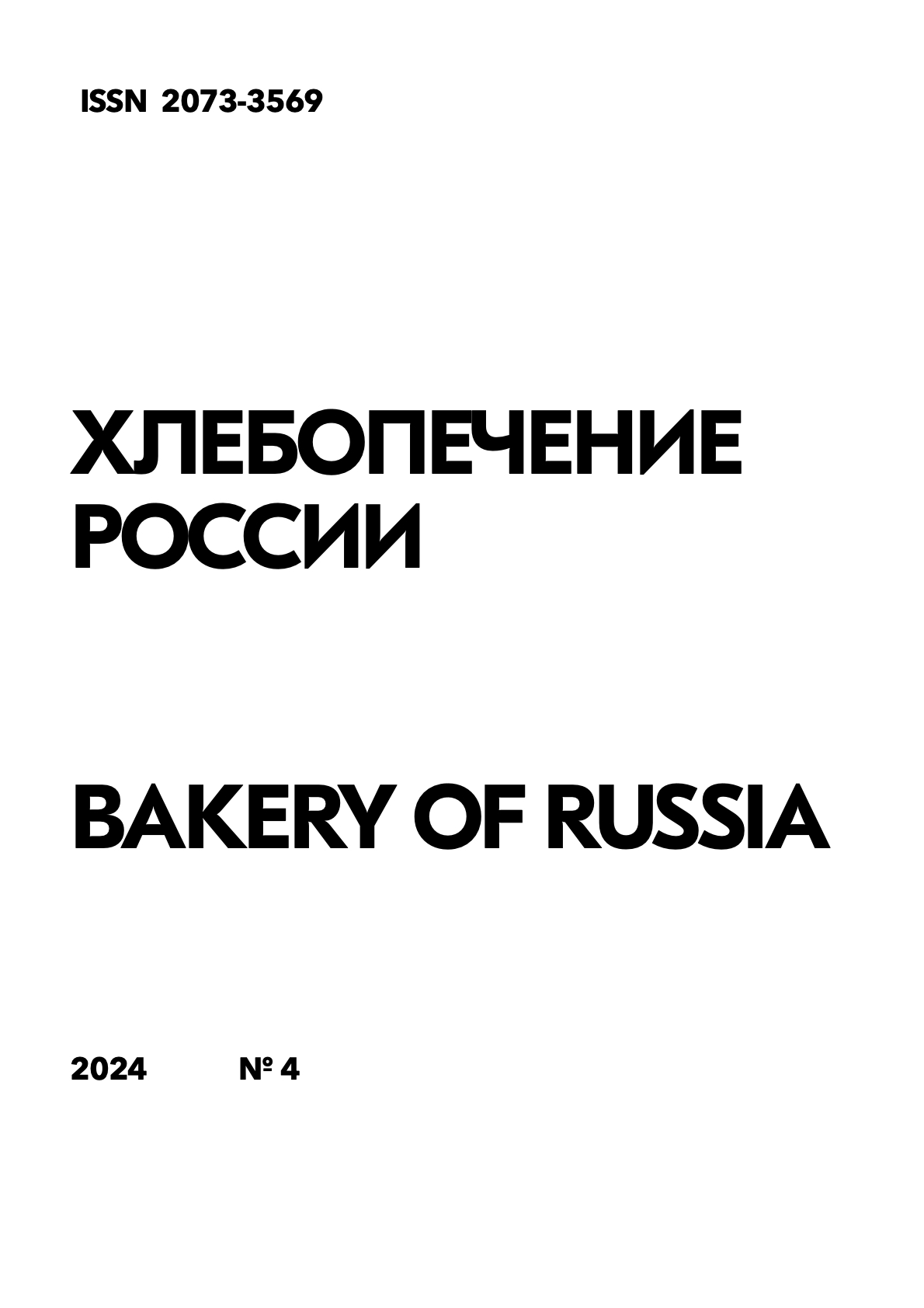The impact of climate change on the spread of diseases and the development of epizootics in food chains
Keywords:
climate change, epizootics, food chains, bakery, biosafety, adaptation, mathematical modeling, GIS technologies, Russia.Abstract
Climate change significantly affects the spread of diseases and the development of epizootics in food chains. The purpose of the study is to analyze the mechanisms of this impact and assess the potential risks for the baking industry in Russia. Methods. An integrated approach has been applied, including the analysis of scientific literature, statistical data, results of field and laboratory studies. The methods of epidemiological analysis, mathematical modeling, and GIS mapping were used. Interviews with experts were conducted (n=25). Results. It has been established that an increase in temperature and a change in the precipitation regime contribute to the expansion of the habitats of pathogenic microorganisms and their vectors. 3 key mechanisms of influence have been identified: changes in environmental conditions, weakening of the immunity of organisms, and the evolution of pathogens. A predictive model for the development of epizootics in grain agroecosystems has been developed. Discussion. The results of the study are important for ensuring biosafety and sustainable development of the bakery industry. It is necessary to develop proactive adaptation strategies based on evidence-based risk monitoring and assessment. Promising areas: creation of climatically optimized grain varieties, improvement of integrated plant protection methods.
References
Второй оценочный доклад Росгидромета об изменениях климата и их последствиях на территории Российской Федерации. М.: Росгидромет, 2014. 1008 с.
Методы оценки болезней зерновых культур: учебно-методическое пособие. Под ред. С.С. Санина. М.: ФГБНУ ВНИИФ, 2019. 100 с.
Новожилов К.В., Танский В.И. Взаимосвязь академической и отраслевой науки в решении проблем сельскохозяйственной энтомологии: тр. РЭО. Т. 7. СПб.: РАСХН, ВИЗР, 2000. С. 37-42.
Одиноков В.Н, Буров В.Н., Куковинец О.С., Ишмуратов Г.Ю., Шамшев И.В., Селицкая О.Д., Зайнулин Р.А. Семиохемики в защите зерна и продуктов его переработки от вредных насекомых. Уфа: Гилем, 2005. 231 с.
Озерецковская О.Л., Васюкова Н.И. При использовании элиситоров для защиты сельскохозяйственных растений необходима осторожность // Прикладная биохимия и микробиология. 2002. Т. 38. № 3. С. 322-325.
Селянинов Г.Т. Происхождение и динамика засух // Засухи в СССР. Их происхождение, повторяемость и влияние на урожай. Л.: Гидрометеоиздат, 1958. С. 5-30.
Соколянская М.П. Токсикологическая и биохимическая характеристика процесса формирования резистентности у комнатной мухи (Musca domestica L.) к современным инсектицидам: автореф. дисс. …к. биол. н. СПб.: Всероссийский научно-исследовательский институт защиты растений РАСХН, 2007. 21 с.
Федоренко В.Ф. Инновационная защита растений от вредных объектов в условиях климатических изменений // Сельскохозяйственные машины и технологии. 2021. Т. 15. № 1. С. 15-26.
Шкаликов В.А. Прогноз развития вредных организмов сельскохозяйственных культур с учетом климатических изменений // Достижения науки и техники АПК. 2009. № 6. С. 71-76.
Bebber D.P. Range-expanding pests and pathogens in a warming world // Annual review of phytopathology. 2015. V. 53. рр. 335-356.
Chakraborty S., Newton A.C. Impacts of global change on diseases of agricultural crops and forest trees // CAB Reviews: Perspectives in agriculture, veterinary science, nutrition and natural resources. 2011. № 6. pp. 54.
Garrett K.A., Dendy S.P., Frank E.E., Rouse M.N., Travers S.E. Climate change effects on plant disease: genomes to ecosystems // Annual Review of Phytopathology. 2006. V. 44. pp. 489-509.
Popova E.N. The influence of climatic changes on range expansion and phenology of the Colorado potato beetle (Leptinotarsa decemlineata, Coleoptera, Chrysomelidae) in the territory of Russia // Entomological review. 2014. V. 94. pp. 643-653.
Richerzhagen D., Racca B., Kleinhenz B., Kuhn R., Falke S. Impact of climate change on the temporal and regional occurrence of Fusarium head blight and deoxynivalenol contamination of wheat in Switzerland // Food additives & contaminants. Part A. 2011. Vol. 28. pp. 1352-1363.
Wu F., Bhatnagar J.D., Bui-Klimke T., Carbone I., Hellmich R., Munkvold G., Paul P., Payne G., Takle E. Climate change impacts on mycotoxin risks in US maize // World mycotoxin journal. 2011. V. 4. pp. 79-93.
Downloads
Published
How to Cite
Issue
Section
License

This work is licensed under a Creative Commons Attribution-NonCommercial-NoDerivatives 4.0 International License.




